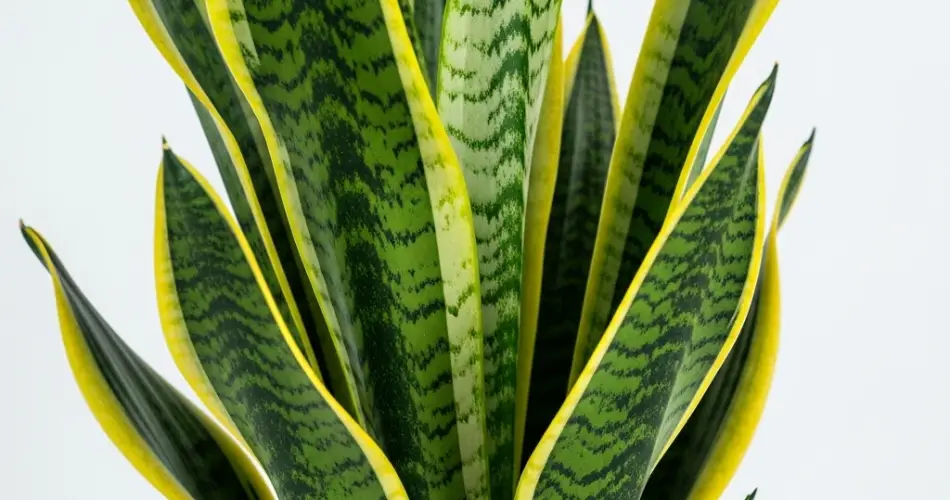The snake plant, also known as Sansevieria or Dracaena trifasciata, is one of the most resilient and visually striking plants you can grow. Often admired for its sword-like leaves and architectural shape, the snake plant is more than just a popular indoor houseplant—it can also add structure, contrast, and elegance to your garden.
While snake plants aren’t typically known for blooming, under the right conditions, they can surprise you with fragrant, delicate flowers. Whether planted outdoors in warm climates or used in containers on patios and balconies, the snake plant can be a transformative addition to any garden space.
Here’s how to care for and encourage blooms from your snake plant for year-round impact.
1. Understand the Snake Plant’s Potential
Snake plants are primarily grown for their foliage, but they can bloom—usually producing clusters of small, tubular, white or greenish flowers with a sweet scent. These blooms often emerge on tall stalks and, while not frequent, are a delightful bonus when they appear.
Typically, snake plants bloom when they are slightly stressed (but still healthy), often due to being root-bound or receiving just the right amount of light and water.
2. Choose the Right Location
To integrate snake plants into your garden design, start by selecting a location with the right conditions. Snake plants are highly adaptable and can thrive in both full sun and partial shade. However, for the best chance of flowering, place them where they’ll receive bright, indirect sunlight or filtered morning sun.
In cooler climates, snake plants should be grown in containers so they can be brought indoors when temperatures drop below 50°F (10°C). In tropical or subtropical regions, they can be grown directly in garden beds.
3. Use Well-Draining Soil
Snake plants are succulents and require well-draining soil to avoid root rot. Whether planting in the ground or in a pot, use a sandy, gritty soil mix. A cactus or succulent soil blend works well, or you can make your own by mixing regular potting soil with coarse sand or perlite.
If you’re planting directly in garden beds, amend heavy or clay soils with sand or pumice to improve drainage.
4. Water Sparingly but Consistently
Snake plants are drought-tolerant and prefer to dry out between waterings. Water deeply, then allow the soil to dry completely before watering again. Overwatering is one of the most common causes of root rot and poor health in these plants.
In warmer months, watering every 2–3 weeks may be sufficient. During the cooler months or when growth slows, reduce watering even further. A healthy balance of minimal stress can sometimes trigger flowering.
5. Fertilize Lightly for Strong Growth
While snake plants don’t need frequent feeding, light fertilization during the growing season (spring and summer) can encourage flowering. Use a diluted, balanced houseplant or succulent fertilizer once a month.
Avoid over-fertilizing, as this can lead to salt buildup in the soil and may inhibit flowering. In fall and winter, withhold fertilizer entirely as the plant enters dormancy.
6. Encourage Blooms Through Controlled Stress
Interestingly, snake plants tend to bloom when they’re slightly root-bound or under mild stress. This doesn’t mean neglect them entirely, but allowing the plant to outgrow its pot and holding back on frequent repotting can sometimes result in flower spikes.
Also, consistent light exposure and careful watering (not too much, not too little) play an essential role in encouraging blooms. While you can’t force a snake plant to flower, optimizing care and allowing some natural stress may trigger it.
7. Prune and Maintain for Shape and Health
Snake plants require minimal pruning, but removing old, yellow, or damaged leaves will keep the plant looking neat and attractive. If grown outdoors in containers or beds, clean up fallen debris around the plant base to prevent pests or fungal issues.
You can also divide overgrown clumps every few years to propagate new plants or refresh container displays.
8. Use Snake Plants Creatively in the Garden
Snake plants are ideal for modern or minimalist garden designs due to their bold vertical lines. Use them as borders along pathways, as accent plants in mixed succulent beds, or in decorative pots on patios and balconies.
They pair beautifully with contrasting foliage like ferns, elephant ears, or trailing succulents, adding height and structure to your layout.
Final Thoughts
Snake plants are more than just hardy houseplants—they’re powerful design elements that can transform your garden with their bold form and occasional, elegant blooms. By understanding their simple needs and providing the right balance of light, water, and minimal stress, you may be rewarded with fragrant flowers and lush growth all year long.
Whether placed in a container garden or featured in a sunlit outdoor nook, the snake plant brings texture, beauty, and resilience to any green space.



